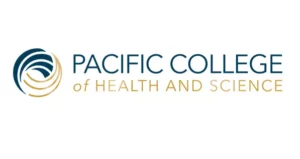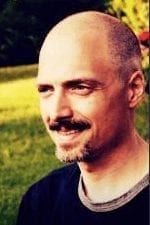By Arnaud Versluys, PhD, MD (China), LAc
Chinese Medicine is an ethnical medical system with strong cultural characteristics. As one enters Chinese medical school, the primary task at hand is to assume new ways of thinking and immerse oneself in its different philosophies. Especially for Western students of Chinese medicine, the need to mold one’s mind and measure oneself a new set of values and life principles, is one of the most important undertakings of the aspirant student. This mission of shaping one’s thought patterns in classical style is crucial to allow one to think in ‘old-fashioned’ Chinese ways as it will be the only means to grasp the often challenging analytical thought models developed by the ancient Chinese.
Methodology of Intellectual Training in Chinese Medicine
The method for this intellectual training is most often anecdotal instruction about how the ancient Chinese viewed nature at large and human nature specifically, emphasizing models such as yin-yang and five phase theory. In a more medically applied context, these originally non-medical theoretical models are then related to solid and hollow organs and elemental correlations of organs in basic physiology; hand and foot channels and five transport points in acupuncture; hot-cold nature and five flavors in herbs, etc. Thus one learns to think in the same, almost simplistic, fashion as the ancient Chinese people did during the developmental stages of their medicine.
But although this chore is undertaken with great passion in the early years of training, it is often abandoned once in practice. Often, when faced with clinical adversity such as lacking results, or wavering confidence due to an onslaught of external pressures for modernization along with a practitioner’s desire to find validation and self-worth, the old-fashioned ways of thinking fall by the wayside. Rather, comfort starts to be derived from ‘modernity’; value starts to be drawn from ‘innovation’ and confidence is built on the unstable sands of an establishment’s approval. But the guiding theories of yore are the basic confines of our medical system, and the unrelenting trust and perseverance in their continued application, are the compass with which to navigate the choppy waters of clinical reality. Little does one realize that turning one’s back away from the classics in a futile attempt to zoom in on the myriad of eclectic aspects of modern linearly evolving Chinese medicine, is like cutting oneself off from one’s intellectual ancestry and cultural roots. This is a feat that has been most dominant in the current world of Chinese medicine.
Ancient Chinese Philosophies and Their Modern Relevance
Consider the following analogy: time in Chinese culture flows like a river, it starts from a higher elevation and slowly flows down a hill. When in Chinese one speaks of ancient antiquity, one calls it ‘upper antiquity’ shanggu 上古[i], while the ensuing period of the ‘middle-ages’ is aptly referred to as ‘middle antiquity’ zhonggu 中古[ii], and the time of writing of the Huangdi Neijing (circa 0 CE) is referred to as ‘the setting times’ mushi 暮世[iii] or ‘the end of an era’. It is clear that the ancient architects of our medicine consider antiquity to be of higher hierarchical value and as one walks the path of life that transpires with the passing of time, ancient times are always more elevated than oneself.
The River Analogy in Chinese Cultural Context
To further elaborate on the river analogy, when the Chinese people, even today, refer to remembrance of origins, it is often done so by invoking the mental image described by the idiom of ‘when drinking water, remember the source’ yinshui siyuan 飲水思源, which implies that one should never forget one’s roots. As such, when drinking of the thousands of years of Chinese medicine’s intellectual flow, one should always remember the source, if not try to drink the water at the source. Using the Yangtze River yangzi jiang 揚子江 as an example, it is easy to imagine that drinking from it at the source, high up in the Tibetan Himalayas would offer one a more pure and nourishing sip of water, than attempting at ingesting its water at the Shanghai delta. As time passes and flow progresses, rivers pollute and, in analogy, knowledge adulterates.
Cosmological Orientations and Their Medical Implications
As all life relies on sunlight and human life and subsequent biology is defined by the body temperature of the warm-blooded mammals we all are, ancient cultures are steeped in sun-worship. Ancient Chinese culture is no exception. The cosmological orientation of the ancient Chinese is considered to face South[iv], so that light and brightness is in front of oneself, and one can see. As the biological evolution of the human body is the product of adaptation to the external environment’s influences, and since the human being faces the warmth and light of the sun in the South, coming from heaven above oneself, then cosmologically positioned behind this human being is the cold darkness of the Northern direction. This is the reason why from a Chinese medicine ‘embryological’ development’s perspective, the taiyang channels are on the back of the body, arms and legs, to keep one warm against the cold of the North coming from behind and below; while the taiyin channels rule the front to keep one cool and moist and protect from the heat of the South coming from the front and above. The symbolic color of the water element in the North is black, to absorb and contain as much warmth as possible, while the color of the metal in the front is white to reflect away as much heat as possible and preserve fluids. It is also why in Chinese language the ‘back’ of one’s body is called bei 背which is the ‘flesh/ body-part in the North’. And it is why from the perspective of the Shanghan Lun School, Cold Damage is considered to first invade the foot channels and to start from the bladder taiyang. While in the Wen Bing or Warm Disease School, the disease is considered to first invade the hand channel of the lung taiyin.
The Direction of Time and Life in Chinese Philosophy
Examples of integration of the ancient concept of time with the human’s orientation in life can be derived from the Chinese language’s reference to time in relation to the now. When referring to things in the past, in Chinese it is commonly called things ‘before you’ or even ‘in front of the face’ qianmian 前面; while things to come are called ‘things behind you’ houmian 後面. The past is known to us, but the future is not. Things to come later are also often referred to as things ‘below’ xiamian 下面, which clearly shows how on an elevation plane, older feats are positioned higher up and feats to come are positioned lower down the timeline, which supports the analogy of the river.
This way of integrating the cosmological orientation with the basic concept of time, allows us to realize that the human being walks one’s life unable to see the future, but guided by the past. Since what is in front of you is bright and clear, the eyes are positioned in the front of the head; but what is behind you is dark and unknown, as we do not have any sunlight in the dark and cold North behind us, nor do we have any eyes on the back of our head to even try and peer into that very darkness. The only thing we see clearly is what came before us, in the past. And that what was in the past, is always considered to be hierarchically higher up than that what is to come, since time flows like a river from a higher place to a lower one. The only compass to then navigate the river of life through time is to keep a clear focus on the only illuminated area revealed to humans, which is the wisdom of the past. This wisdom is the only thing to be studied and is the only lesson to function as a guide for walking through life. And so for medicine, the best guide for walking the path of a physician, from lesser and limited knowledge and experience to expansive and vast understanding of theory and practice, is to never lose the focus on the classical origins of the medicine. To focus on things modern and futuristic, for example the modernization and industrialization of Chinese medicine, requires one to turn one’s back to the past and look towards the dark and uncertain future. This not only cuts one off from one’s origins, but it also has no guarantee of success as in the future there is only darkness into which the human eye cannot penetrate deeply.
The Integration of Ancient Wisdom in Modern Clinical Practice
Examples of this orientation in life are abundant and range from the aforementioned study of medicine to even general concepts of family relations, ethics and filial piety. Older people are called ‘upper generation’ shangbei 上輩 or the ‘generation in front of you’ qianbei 前輩, while the younger generation is called the ‘generation behind you’ houbei 後輩. Also here, one sees that the filial piety a wise person displays is rooted in respect for things older. In practical terms, to continue the family-relation analogy, this does not mean that one cannot critically evaluate what is older than oneself, but it points at never turning one’s back to it, even while critically assessing one’s roots.
Clinically, this concept of respect for antiquity, worship of the sun, etc, translates in the concept of the heart as the fire element in the South and as the emperor of the body; the use of herbs to support yang and at all times stabilizing and protecting body temperature; the safeguarding of functional movement; the preference to first treat hollow organs over solid organs; as well as academically favoring canonical formulas of the Han dynasty Shanghan Lun and Jingui Yaolue over their more modern counterparts; or preferring five phase-based acupuncture of the Nanjing over medical acupuncture or dry-needling, etc.
Are you interested in becoming a certified acupuncture professional?
Visit the links below to explore our specialized acupuncture programs at a campus near you:
Emphasizing the Importance of Classical Foundations in Chinese Medicine Practice
In summary, to study and practice an ethnic and culturally defined medicine such as Chinese medicine, one must abide by a certain set of rules which are embedded in the lives and words of the ancient people. To practice Chinese medicine, one must always focus on the root theoretical models of yin yang, five phases, six qi, etc. And these root theories are described with ultimate accuracy and in total purity, in the classics or canons written in Han dynasty. One needs to realize that even if one makes academic soup in Song dynasty, the intellectual water used as the basic ingredient comes from the Han dynasty canons. Everything in Chinese medicine, be it Sui dynasty Zangfu theory, or Song dynasty departmentalization, or Jin Yuan dynasty intellectual endeavor, to ultimately Ming dynasty eclecticism and Qing dynasty modernization, all are rooted in and can be traced back to the writings of the Han dynasty canons. And so for students, it is important to drill and train these basic skills first, while for practitioners it is crucial to surmount clinical obstacles by returning back to the source texts rather trying to peer into an uncertain darkness.
[i] Huangdi Neijing, Suwen, Chapter 1
[ii] Huangdi Neijing, Suwen, Chapter 13
[iii] Ibid.
[iv] Huangdi Neijing, Suwen, Chapter 6
Featured Posts:

